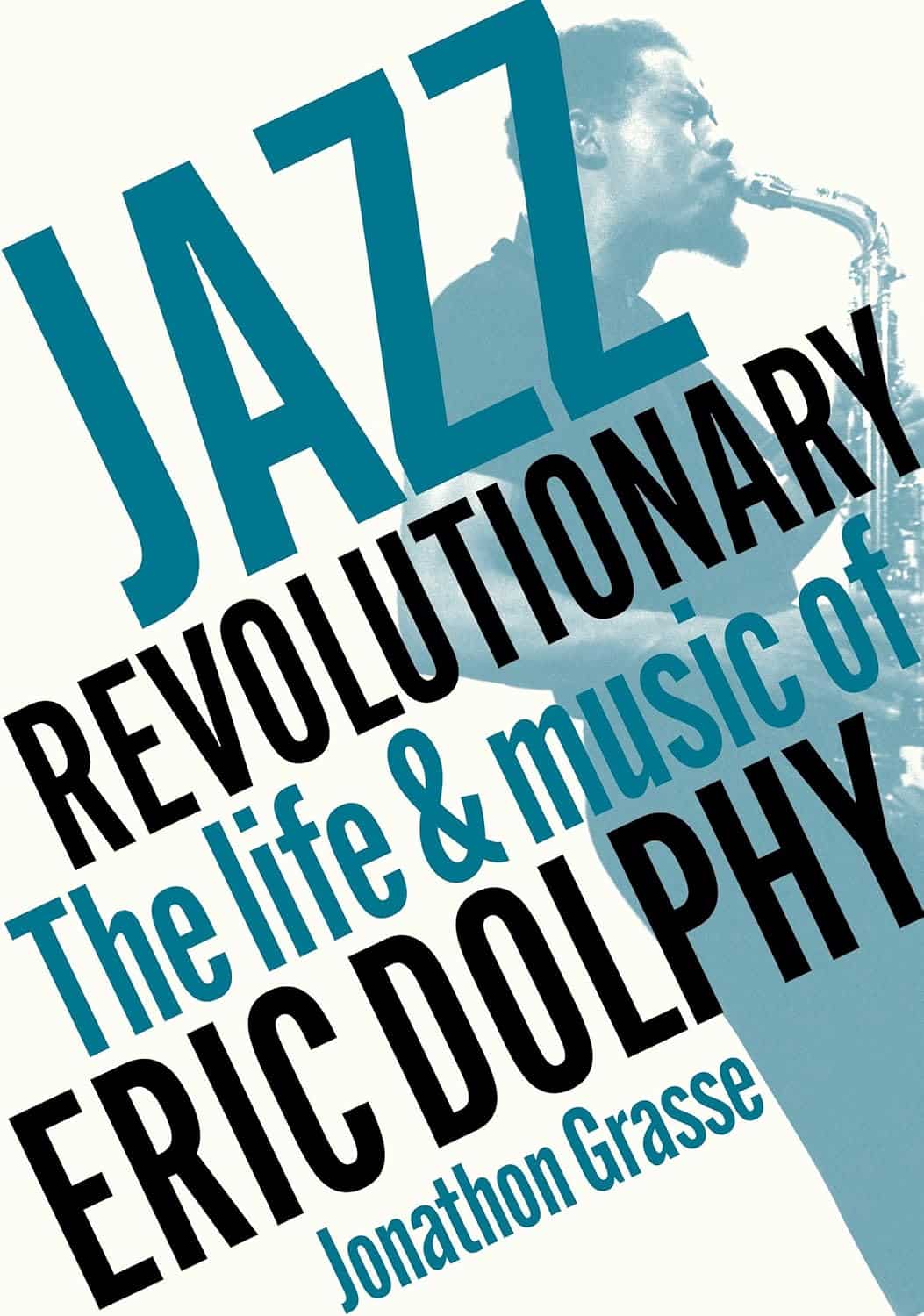The avant-garde has won the battle for jazz history, the critic Phil Freeman observed recently. The 1960s, it’s agreed, saw the loud stirrings of a new approach to jazz. Though disturbing to some at the time, its proponents, such as Ornette Coleman, Cecil Taylor, Archie Shepp, or Muhal Richard Abrams, were acknowledged later as jazz masters.
Some of those in the vanguard never enjoyed that recognition, usually due to untimely death. Eric Dolphy, whose liquid flute, alto saxophone cry, or unprecedentedly agile bass clarinet adorned many key early ‘60s ensembles, is a prime example. In a music marked by many sad departures, Dolphy’s still stands out. He made his first recording as leader in 1960, and died just four years later, at 36, a few weeks after moving to Paris to cultivate his career in Europe.
Nonetheless, as Jonathon Grasse’s biography reaffirms, Dolphy was a pivotal figure at a time when jazz was exploring new musical territories at a pace probably unmatched before or since. Raised in Los Angeles, he was musically omnivorous from the start, studied assiduously, and played wherever he could. By the time he arrived in New York in 1959, after a spell playing chamber jazz with Chico Hamilton, he was formidably skilled and ready to interact with the larger scene there in its full breadth.
And interact he did. There were important stints with John Coltrane and Charles Mingus’s groups, landmark recordings with Oliver Nelson (Blues and the Abstract Truth), Coleman (Free Jazz), Andrew Hill (Point of Departure), Booker Little (Out Front), and George Russell (Ezz-thetics), and intense involvement with Gunther Schuller’s experimental third stream ensembles, trying to recombine elements from jazz and classical music.
Grasse chronicles all this efficiently. He’s a Dolphy devotee as well as a composer and ethnomusicologist at California State University and combines engaging enthusiasm for the music with a rigorous approach to his sources. That doesn’t lead to especially evocative writing – Eric Thacker’s commentary on Dolphy in The Essential Modern Jazz Records remains perhaps the best piece about him on my shelves – but does yield a detailed and clear account of the life and work.
There’s not too much new to say about the life, brief as it was, but the book presents a an illuminatingly exhaustive study of the work. Here Grasse has the advantage over Thacker that the murky history of jazz archives means a good deal of recorded music only became available relatively recently. The original releases from sets captured when Dolphy joined Coltrane’s quintet at the Village Vanguard in 1961 focussed mainly on the tenor player’s work, for example. The complete sessions, finally heard on CD in 1997, are revelatory, letting us hear Coltrane in lengthy live encounters with a horn player whose creativity matched his own. Resonance Records’ restoration of Dolphy’s own complete 1963 New York studio sessions in 2019 is another key document.
Grasse deals carefully with this material, and indeed with every other relevant release, unofficial or official, obscure or well known. The amount that survives is impressive, given the brevity of the career – the Mingus sextet’s tour of Europe in 1964 seems to have been recorded in almost every city they played in, for instance. So is the diversity of Dolphy’s contributions. As well as being a genuine multi-instrumentalist, with distinctly virtuosic approaches to flute, saxophone and bass clarinet, he was intent on investigating new forms and styles. His vital contributions to Schuller’s projects, which I suspect no-one much listens to now, also feature prominently here.
All this remarkable music, detailed comprehensively but not uncritically, deepens regret that we will never hear what Dolphy might have played in the next thirty or forty years. And it invites reappraisal of what he did achieve.
Our view of the 1960s avant garde has moved beyond hostile contemporary reactions – which tell us more about the critic than the music. Grasse quotes a slew of savage dismissals of Dolphy’s playing (as well as some positive ones) from Downbeat, but it’s salutary to find the same kind of thing prompted by his sole visit to the UK.
The Coltrane quintet with Dolphy were mostly enthusiastically received on their European tour in 1961 – but not, it appears in Britain, where they met largely with incomprehension. The Melody Maker’s verdict that Coltrane and Dolphy were contributing “extraneous noise” is trumped by the doltish comment from Benny Green in Jazz Journal that “The twelve-minute flute solo of Dolphy’s at the Gaumont State, Kilburn, represented the low water mark of jazz in this country”. (*)
Such reactions could support the claim in Grasse’s title that Dolphy was a revolutionary, but I’m not sure that’s quite right. He was certainly an incandescent talent, and a vastly influential one. The influence is diffuse partly because he was such a brilliant multi-instrumentalist. The future of each of his instruments was marked by his presence, but differently – Gary Giddins’ suggestion that Oliver Lake expanded on the vocabulary Dolphy created on alto sax, James Newton extended Dolphy’s flute and David Murray his bass clarinet seems apposite.
But a revolutionary? Grasse’s skillful and painstaking assembly of Dolphy’s achievements may not convince that’s the best term. Dolphy had a vast curiosity which he harnessed to discover new sounds, and heard harmony differently from most of his peers. But he cultivated a seriously playful attitude to the constraints of conventional tonality, rather than discarding them. And he brought out the same in others. Freddy Hubbard is a bit of a fish out of water on Coleman’s Free Jazz, for example, but contributes some of his finest soloing to Dolphy’s classic Out to Lunch session a few years later.
That curiosity also made Dolphy an inspired contributor to other people’s sessions. Grasse suggests a few times that he spent time on sideman gigs when a more receptive audience might have seen him out leading his own groups. Maybe so but, as Ted Gioia says, he was in many ways the perfect sideman because his skill set was so exceptional. And hear him, on B-flat clarinet for once, work with Ron Carter’s cello on Mal Waldron’s soothingly atmospheric Warm Canto from the pianist’s 1961 The Quest, and I fancy you’ll not feel you are listening to a revolutionary.
It’s another facet of his work that makes this extraordinary musician, like all the most interesting ones, hard to categorise. If not a revolutionary, what was he? Other labels usually sound a bit of a cop-out. Ronald Atkins, in Dave Gelly’s Masters of Jazz Saxophone, leads with Dolphy in the chapter entitled “Post-bop individualists”: which is accurate, but sensibly non-committal. We may grant author, or publisher, the right to go for something more arresting in the title when they’ve done such a good job on the book. But I’m with Atkins: what really distinguishes Dolphy’s lasting contribution is that, whether leading or lighting up someone else’s ensemble, he was expressing a unique musical personality, one Grasse helps us appreciate more deeply.
(*)To hear what prompted this putdown, you can sample the 1961 quintet’s session in a TV studio in Baden-Baden shortly after their visit to the UK . Dolphy plays flute on My Favourite Things, very likely similar solo feature to that attracted Green’s ire – YOUTUBE.


